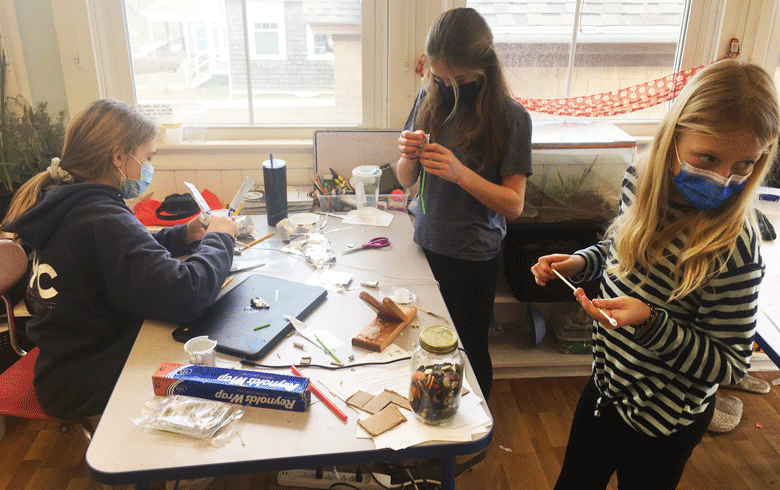In February, students from Maine’s outer islands met virtually for a field trip to NASA’s Goddard Space Flight Center. Students and teachers from the one-room schools on Cliff, Monhegan, Isle au Haut, Frenchboro, Great Cranberry, Little Cranberry, and Cuttyhunk (in Massachusetts) islands met on Zoom with NASA educators to learn about space.
Over the winter, the Cranberry Isles teaching principal Hayley Fenton reached out to me about organizing a virtual field trip opportunity with NASA’s Goddard Space Flight Center in Maryland. NASA’s field trip options for grades K-4 and 4-8 required a minimum of eight students per group, which meant the small outer islands schools would need to combine to have enough students per group.
“We students got to listen to two NASA scientists talk about space, satellites, and a giant space camera…”
Fortunately, these schools are accustomed to collaboration through the Outer Islands Teaching and Learning Collaborative (TLC), teaming up for in person field trips, plus virtual book groups, teacher meetings, and student council throughout the year.
After running the idea by TLC teachers and receiving an enthusiastic, positive response, I scheduled the Zoom field trip with the NASA educators. The K-4 group’s trip focused on living and working in space, while the 4th-8th grade trip focused on satellites—how to build, test, and prepare them, plus what they can do in space. The NASA team also offered pre- and post-trip activity ideas to extend the learning experience.
Isle au Haut 5th grade student Isabelle Teague wrote about the field trip:
“Before the online meeting with the scientists from NASA, the participating schools had to watch several videos. In the videos we learned about space satellites and learned about what people who worked there did.
“We students got to listen to two NASA scientists talk about space, satellites, and a giant space camera that NASA built. One of the scientists was inside a NASA museum and stepped behind a machine that showed a picture of the person standing behind it except it showed red for where the person was warm, and blue or green for where they are cold, for example their shirt. They also showed us a mug and we had to guess if it had hot or cold water based on the color it showed behind the infrared machine.
“We were shown photos from space with a regular lens and then the same photos through infrared light. The colors were lighter and some stars were not visible.
“After the virtual field trip my school made small satellite models out of used materials like empty bottles, and cardboard. This virtual field trip was amazing, and I recommend it to anyone who wants to learn about space.”





